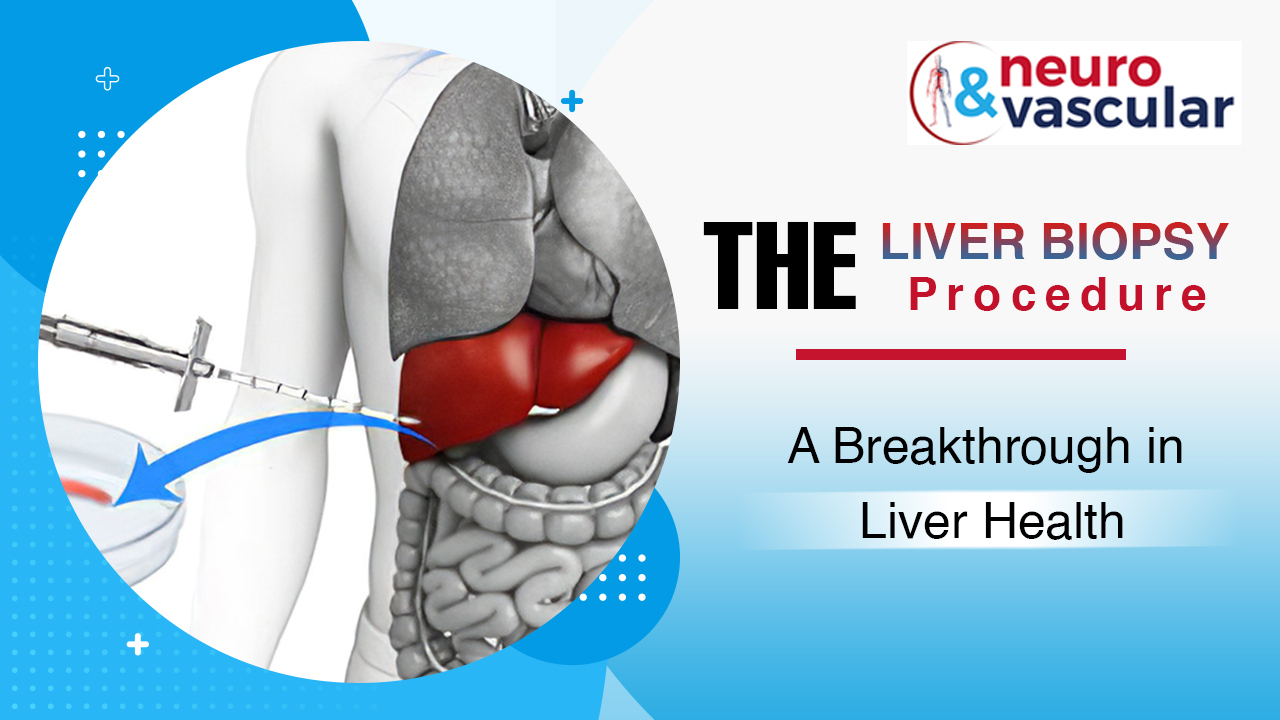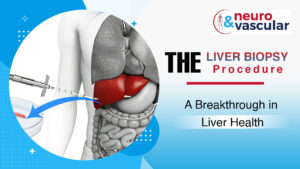
The Liver Biopsy Procedure: A Breakthrough in Liver Health

What is a Liver Biopsy?
If your blood tests or imaging scans indicate potential liver issues, your doctor may advise a liver biopsy. This quick procedure involves removing a small piece of liver tissue to examine it under a microscope for signs of damage or disease, and this helps to determine the state of liver disease and guide treatment decisions.
Commonly, a needle is inserted through the belly under local anaesthesia to obtain the tissue sample, but other less invasive methods are also available.
What is the need for a liver biopsy?
Liver biopsies serve a vital role in diagnosing and treating various liver conditions. It may be recommend when an issue cannot be identified through traditional testing methods or to determine the severity of a disease. Doctors use liver biopsies to personalise treatment plans and monitor progress.
They are typically safe and effective and are commonly used to diagnose and stage several liver diseases, including:
- Liver cirrhosis,
- Nonalcoholic fatty liver disease.
- Autoimmune hepatitis
- Primary biliary cholangitis
- Primary sclerosing cholangitis
- Chronic hepatitis B or C
- Hemochromatosis
Liver Biopsy: Risks and Safety
A liver biopsy is generally safe when administered by a qualified healthcare professional. However, some risks include:
Pain: Mild pain and discomfort are normally shown after a biopsy procedure. Pain medication and narcotic pain medicines may be prescribed to relieve post-procedural pain.
Bleeding: Though uncommon, there may be bleeding after the liver biopsy. In extreme cases, blood transfusion or surgery may be required to stop bleeding if the bleeding is too much.
Infection: there is a rare chance of bacteria entering the blood or the abdominal cavity during the procedure.
Accidental injury: There is a minute possibility that the needle might unintentionally stick to an internal organ like the gallbladder or lung during the biopsy.
The Types of Liver Biopsy
When taking a liver biopsy, there are five different types to choose from. These are:
Percutaneous Liver Biopsy:
This procedure involves making a small incision to collect a sample of liver tissue. Patients will be asked to lie down in a comfortable position with their right arm supporting their head. The hepatologist will use ultrasonography to guide the needle into the liver.
Transjugular Liver Biopsy:
Patients at high risk of complications from a percutaneous biopsy may benefit from this method. A tube is threaded down through the patient’s neck to reach the liver, allowing the doctor to collect a tissue sample.
Laparoscopic Liver Biopsy:
This approach is performed under general anaesthesia. The hepatobiliary surgeon will make small incisions in the patient’s abdomen, using a camera and special tools to guide their movements.
Endoscopic Ultrasound – EUS Guided Liver Biopsy
This method involves using an endoscope with a suction syringe and needle to collect a tissue sample. The needle is passed through the stomach or duodenum wall into the liver.
Plugged Liver Biopsy:
This variation of the percutaneous method plugs the biopsy tract, minimising the risk of bleeding.
With these five options, doctors can select the best biopsy procedure for their patients based on their needs and medical history.
Must read: What are the Interventional Therapies for Liver Cancer?
Preparing for a Liver Biopsy: What You Need to Know
Before undergoing a liver biopsy, it is important to inform the interventional radiologist or interventional gastroenterologist of the following conditions:
- Any cardiovascular disease
- Pregnancy status
- Allergies to medications
- Family history of bleeding disorders
- Taking any blood-thinning agents, over-the-counter pills, vitamins, herbs, and other dietary supplements.
The patient must abstain from blood-thinning agents or other drugs at least one week before the biopsy or follow the hepatologist’s instructions.
The doctor may request laboratory tests, ultrasound, or CT scan 2-7 days before the procedure to ensure the best needle placement. The interventional specialist will notify the patient when the biopsy type is finalised, and it is time to check into the hospital.
The primary care doctor will explain the process to the patient, and a consent form will be given before signing for the procedure. The patient needs to read the form carefully and ask questions. Before the biopsy, the patient should abstain from food and drink for 4-6 hours.
Your Guide to a Liver Biopsy: What to Expect and How It Is Done
The liver biopsy is usually done in interventional radiology department. The patient will be wearing a gown. Before the actual biopsy, the patient will receive a sedative to ease their nerves, and an IV line may be inserted in their arm or hand. The patient’s blood pressure and heart rate will be monitored throughout the procedure to ensure comfort and safety. The interventional radiologist can perform the above procedures to obtain a tissue sample tailored to the condition. Once the doctor collects the sample tissue(s), it will be sent to the pathologist for further assessment under a microscope.
Recovering from a Liver Biopsy Procedure
After the procedure, patients will be carefully monitored in a recovery room for four hours. Vital signs will be regularly checked to ensure a safe recovery. While patients may experience mild discomfort or soreness in the upper abdomen, right shoulder, or back, our experts can prescribe analgesics if needed. Additionally, the doctor may recommend avoiding strenuous physical activity for at least 24 hours. Patients will receive instructions on wound care, diet, and when to resume previous medications at discharge time. The healthcare team will guide the patient in every step of the way.
Discovering Your Liver Biopsy Results: Understanding the Pathologist’s Diagnosis
A pathologist specialising in diagnosing disease examines your liver tissue after it is removed during a biopsy procedure. The pathology lab will send your biopsy report to your doctor within 2-3 days.
During a follow-up visit, your doctor will explain the biopsy results. Depending on the severity and stage of your liver disease, you may need treatment. Gain clarity on your diagnosis and get the guidance you need from your healthcare provider.
About the Author:

Name: DR .SURESH GIRAGANI
INTERVENTIONAL RADIOLOGIST
DR. SURESH GIRAGANI CONSULTANT INTERVENTIONAL RADIOLOGIST at Apollo hospitals Jubilee Hills, has more than fifteen years of clinical experience in vascular interventions with a special interest in neurovascular and peripheral vascular disease interventional procedures.